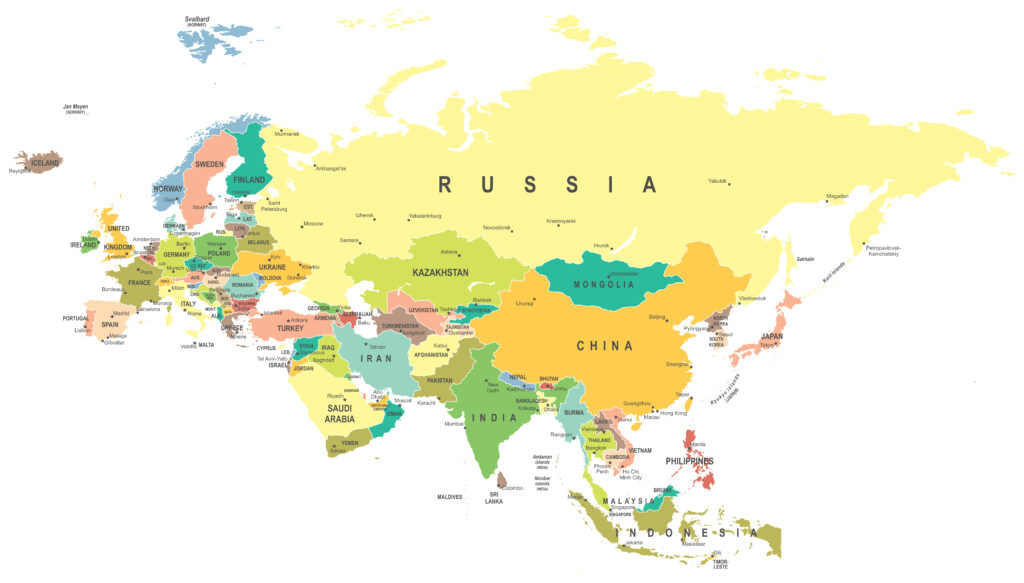
By Eva Bartlett, August 1, 2023, RT.com
The recent US decision to send cluster munitions to Ukraine is immoral, unethical, and criminal. We’ve already seen the horrific results of the use of such weapons – civilians mutilated and murdered (often decades later) in Iraq and Southeast Asia, for example, and in Lebanon.
In addition to the ethical reasons not to send these weapons to Ukraine, there are pragmatic reasons why, from a military perspective. They are pointless for Ukraine, in spite of Western promises that they will “do more damage across a larger area than standard unitary artillery shells by releasing bomblets, or submunitions.”
In reality, while covering a wider area than a conventional high explosive munition, the cluster bomblets do not inflict more powerful damage, certainly not against Russian fortified positions. Their use is mainly for targeting troops in the open and lightly armoured vehicles. Not a game changer for Kiev.
According to former US Marine Corps intelligence officer Scott Ritter, “these are the worst weapon in the world for trench warfare. With trench warfare, you need a high explosive round that collapses bunkers, that collapses trenches.”
If the US knows that cluster munitions won’t change facts on the ground for Ukraine, why is it sending them? Because, as President Joe Biden himself has said, Ukraine is “running out of ammunition and we’re low on it.” So, the US might as well offload its old stock of cluster munitions. They will not, as Biden claimed, “stop those tanks from rolling.” Nor will they – as the Biden administration claims – “save civilian lives.” They will almost certainly be used to kill, maim, and terrorize more Donbass civilians immediately and for years to come.
US Colonel Douglas Macgregor has emphasized that the cluster munitions have a high dud rate. According to Ritter, close to 40% of them fail to explode. Macgregor also highlighted how children are “attracted to these bright shiny objects that look like baseballs,” so insidious is their design.
US National Security Advisor Jake Sullivan assures us that Kiev will not misuse the clusters. He claims that “Ukraine is committed to post-conflict de-mining efforts to mitigate any potential harm to civilians,” and that “Ukraine has provided written assurances that it is going to use these in a very careful way that is aimed at minimizing any risk to civilians.”
The US never signed the Convention on Cluster Munitions – which prohibits all use, production, transfer, and stockpiling of cluster munitions – but didn’t mind virtue signalling its abhorrence of them when it lobbed accusations against Russia (also not a signatory of the convention) on February 28, 2022, with Biden’s then press secretary, Jen Psaki, calling the use of cluster munitions a potential “war crime.”
As usual, it’s a heinous war crime when a US enemy supposedly does it, but not when an ally – or the US itself – actually does. As for Ukraine’s feeble promises to not use the cluster munitions against civilians, it has already been doing so since 2014.
Ukraine’s history of cluster-bombing civilians
By way of a personally witnessed example, in late March 2022, I visited the site of a Ukrainian missile attack that earlier that month had killed 22 civilians and injured 33 more. Because the Ukrainian-fired Tochka-U missile was intercepted, not all of its 50 cassettes of cluster munitions inside exploded in the city streets. Otherwise, the bloodbath would have been much worse. Then, in April 2022, Ukrainian forces targeted a railway station in Kramatorsk, likewise firing a Tochka-U with a cluster munition, killing a reported 50 people. Western media predictably accused Russia of the war crime, although investigations showed the missile emanated from Ukrainian-held territory to the southwest.
But like most of Kiev’s war crimes against Donbass civilians, its use of cluster munitions didn’t start in 2022. Back in 2014, Human Rights Watch (HRW) reported on Ukrainian government forces’ use of cluster munitions in populated areas in Donetsk city. An October 2 attack on the centre of Donetsk that included the use of cluster munition rockets killed an employee of the International Committee of the Red Cross (ICRC).
The New York Times likewise reported that on several occasions in October 2014, “the Ukrainian Army appears to have fired cluster munitions into the heart of Donetsk, unleashing a weapon banned in much of the world into a rebel-held city with a peacetime population of more than one million.” Citing physical evidence and interviews with witnesses and victims, the newspaper wrote there were “clear signs that cluster munitions had been fired from the direction of army-held territory.”
Ukrainian ‘petal mines’ continue to maim
But these aren’t the only clusters Ukraine has fired on Donbass civilians. In fact, over the course of last year, I documented the aftermath of Ukraine firing rockets containing cassettes of internationally-banned PFM-1 “petal” mines, over 300 of the mines per rocket.
Due to their design, they generally glide to the ground without exploding, until someone or something steps on or otherwise disturbs them.
According to authorities in the Donetsk People’s Republic (DPR), Ukraine began firing these tiny, indiscriminate mines on March 6, 2022, during the battles for Mariupol, and then from May 18, 2022, into DPR and Kharkov Region settlements.
Since first documenting the aftermath of Ukraine’s use of the mines in central Donetsk in late July, 2022, I’ve interviewed victims, and reported on the painstaking work of Russian sappers to locate and destroy the mines. As of July 25 this year, 124 civilians have been injured by the mines, including ten children. Three civilians died as a result of their injuries.
Ukraine ratified the Ottawa Convention (the Anti-Personnel Mine Ban Convention) on December 27, 2005, and it entered into force on June 1, 2006. Accordingly, Ukraine was obliged to never use anti-personnel mines, nor to stockpile or transfer them, and should have—but hasn’t—destroyed its stock. Of its 6 million stock of the PFM-1 mines, reportedly Ukraine still has over 3.3 million.
And while Human Rights Watch did finally address Ukraine’s use of the mines against civilians in one location – the city of Izium, north of Donetsk – the highly partial Western-funded NGO failed to investigate, much less highlight, Ukraine’s widespread use of the mines on Donbass civilian areas. HRW, as I wrote in March, then advised Ukraine to investigate itself for its use of the prohibited mines.
Western weapons used to kill Donbass civilians
It should be mentioned that over the course of its now nine-year war against Donbass, Ukraine has been using conventional NATO munitions to slaughter and maim civilians. The high explosive shells Ukraine fires throughout Donbass cities and towns, but also countless times in the very heart of Donetsk, tear people apart, leaving mangled bodies and remains on streets and sidewalks, and in marketplaces.
On July 22, Ukrainian forces allegedly shelled Russian journalists in Zaporozhye Region with cluster munitions, killing one and injuring three others.
These deliberate attacks on the media, on civilians’ homes, hospitals, infrastructure, and on civilians themselves should be condemned as loudly as Ukraine’s firing of petal mines and of cluster munitions in general. But the US announcement that it would send cluster munitions to Ukraine resulted in some mild tutting from other Western nations, but no seriously strong condemnation. Canada is one of the nations voicing at least some objection to sending cluster bombs, the leadership in Ottawa probably feeling it ought to mildly protest, given Canada’s convention.
The Canadian government recently stated that it is fully against the use of cluster munitions and is “committed to putting an end to the effects cluster munitions have on civilians – particularly children.” Yet aside from polite grumblings regarding the US clusters, I’ve seen no Canadian condemnation of Ukraine’s repeated use of cluster munitions on the civilians of Donbass.
But the real criminals here are the US government, which knows sending its cluster munitions won’t actually help Ukraine fight the Russian military in any tangible way, but that it is highly likely Ukraine will instead use them against Donbass civilians. Apparently, that’s just fine with the crocodile-tear-crying US hypocrites.
Update:
RT: “Cluster Munitions Hit Passenger Bus in Makeevka-Yasinovataya (Donetsk People’s Republic) – the vehicle came under fire from Kiev’s forces – local authorities”
Related Links:
–UN agency chief ‘deplores’ killing of Russian journalist
–The West is silent as Ukraine targets civilians in Donetsk using banned ‘Petal’ mines

